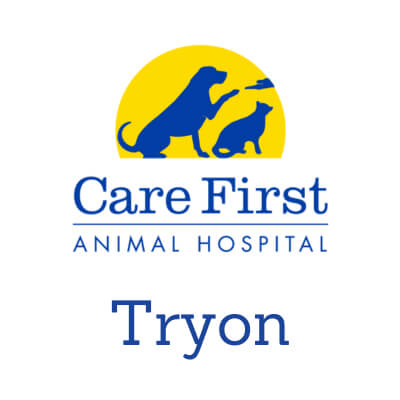How often should I bathe my dog or cat?
For cats: Most cats don’t really need to have a bath, unless they are older and not grooming, or have allergies or skin disease. Cats will normally clean themselves!
For dogs: A normal dog: bathing once a month is good. Just like people, dirt can build up on the skin and cause irritation and infections. Dogs with allergies or skin disease: Bathing once to twice a week in a medicated shampoo will make a world of difference. By controlling the dirt, dander, and allergen load on the skin, secondary infections are less likely to occur. Bathing also helps to calm the skin, if using a veterinary recommended shampoo. DermaLyte is a perfect everyday shampoo that won’t dry your pet’s skin. Malaseb shampoo can be used to treat skin irritations and infections.
Is paying for dog training worth it?
Professional training will teach your dog basic skills and tricks, while also providing an opportunity for them to learn obedience, strengthen their confidence, reduce non-desirable behaviors and reinforce the bond you share.
What do I do if I miss a monthly heart worm pill?
As soon as you realize you have missed a dose, restart the prevention. Call to schedule an appointment for a heartworm test to ensure your pet is still negative, then repeat the test in 6 months to make sure there isn’t any infection. Why do we retest in 6 months? The heartworm test performed is an antigen test and can take up to 6 months to test positive for heartworms.
How long does it take to train a dog?
With training and consistent practice outside of the classroom, you should notice a change in your dog’s behavior anywhere from 3-8 weeks. Dog training may vastly change depending on the dog, its environment and training history. Taking a systematic approach is the best way for you and your dog to adjust to training routines and demands. After the first session, many students continue training in group classes or find a sport/hobby for their dogs - the students realize how fun training is and the positive impact on their dog!
I found a tick on my pet! What do I do?
The first thing to do when you find a tick is to remove it. Take a pair of tweezers and grab the base of the tick (near the head), tilt the tick’s body in the opposite direction than it is laying and the head should unlatch. Pull. Clean the site with rubbing alcohol and kill the tick. Because tick diseases can be transferred quickly, schedule an appointment to be seen for a serum blood test to ensure your pet did not contract a debilitating tick disease.
How do I get started with Raleigh dog training?
Training can start as early as 8 weeks of age, but it’s never too late to start! Contact our Glenwood office to learn more information about our training programs and how you can enroll today.
How do I clean my pet’s ears?
Cleaning your pet’s ears can be fun and satisfying! Start with a veterinary-approved ear cleaner, like the Triz-Keto cleaner. Pour a generous amount into each ear and massage the base of the ears (the trick to preventing your pet from shaking their head during this step is to lift up on one of the ear pinnas). Release your hands and let your pet shake their head. Then using cotton balls clean out all the folds and ripples in the ear. Can you go too deep? Yes, but this is very difficult since the ear canal has a vertical canal and then makes a 90 degree turn towards the head, then a lateral canal, on the end of which is the ear drum and the bulla. Clean your pet’s ears once to twice weekly and after swimming or baths to prevent infections and wax build up.
How much do dog training services cost?
We charge $199 for our six-week class. Call or email our Glenwood location at 919-783-7387 or [email protected] to enroll
Why should I brush my pet’s teeth?
Tartar can build up on the teeth within 48 hours and turn into plaque. Plaque and tartar harbor bacteria that can get into the gums and lead to kidney, heart, and gastrointestinal diseases. Using an appropriate enzymatic toothpaste to brush your pet’s teeth will help prevent tartar and bacteria build up. The CET toothpaste comes in chicken, vanilla mint, and salmon flavors your pet will love! Just a quick brush a day to keep the tartar away! Watch the below video to learn how you can brush your pet’s teeth easily.
What are some things I should have in a first-aid kit for my pet?
- Phone numbers—Your current veterinarian, emergency clinic near your destination, ASPCA poison control (1-800-426-4435)
- Your pet’s paperwork—copies of vaccine history and medical records, copy of rabies certificate
- Extra leash, collar/harness
- Muzzle to prevent biting—even the sweetest dog may bite if painful or scared
- Ice pack
- Gloves
- Thermometer and lubricating jelly to obtain a rectal temperature (Normal is 101-102.5 F)
- Nail trimmers—nails can be easily broken or torn during activity
- Towels/blankets
- Tweezers—can help remove ticks or foreign material from wounds. Use rubbing alcohol to clean the area and kill the tick after it is removed
- Hydrogen peroxide to induce vomiting—you will need to call to obtain dosing for your pet’s size and to make sure that it is safe to induce vomiting depending on the substance ingested
- Medications:
- Antibacterial ointment
- Diphenhydramine (Benadryl)—can help decrease the severity of allergic reactions or itchiness from insect bites, will need to call to obtain dose for your pet
- Extra supply of any medications your pet is routinely taking
- Diabetic pets—Extra insulin, extra syringes, Karo syrup in case of a hypoglycemic episode
Should I get a microchip for my pet?
Every year, countless dogs and cats go missing. Microchips greatly increase the chance that your pet is returned to you if they become lost. A traditional collar will likely break if your pet is lost, but a microchip is permanent and will help reunite you and your pet.
How do I know if my pet is in pain?
Many pets will try to hide that they are in pain. It’s important for pet owners to be on the lookout for sudden changes in your pet’s behavior that could be a clue that they aren’t feeling well. Common signs of pain are:
- Vomiting
- Excessive licking
- Whining
- Pacing
- Refusal to move
- Loss of appetite
- Submissive behavior
If you’ve noticed any of the above signs, bring your pet to see a veterinarian.
Should I spay or neuter my pet?
Yes, there are many positive behavioral and health benefits from spaying your pet, including a lower risk of prostate and testicular cancer in males, less chance of uterine infection or breast tumors in females and less aggressive tendencies.
When is my puppy old enough to play with other dogs?
We recommend that puppies do not play with other dogs until they have finished the first series of vaccinations. This protects them from any diseases or infections that the other pet might have, especially because puppies have a low immune system compared to adult dogs.Discuss with your veterinarian safe ways to socialize your puppy.
How much exercise does my dog need?
Each dogs’ needs are unique and the proper amount of exercise depends on your dog’s breed and age. Puppies need more exercise than adult dogs, and it’s best for them to have multiple playtimes or walks throughout the day. For adult dogs, high energy breeds need much more exercise and typically smaller dogs need less exercise, however the average amount of movement they need per day is 30 minutes to 2 hours. If your dog is older, they might not need as much exercise as they used to. For senior dogs, it’s best to discuss their specific needs with a veterinarian.
What’s my pet’s ideal weight?
It can be difficult to know the ideal healthy weight for your pet, but there are a few signs and tests to determine if your pet is underweight, ideal weight or overweight. First, you should be able to feel your pet’s ribs under their fur and skin. If you can’t, they may have too much fat. Another test is to look down while your pet is standing up and make sure that they have an hourglass future where their waist is smaller than their ribs. If you can see each of your pet’s ribs, then they are underweight, but if their waist is in line with their ribs, they may be overweight. You can also use an online tool, such as this one from PetMD, that will help you determine the perfect weight for your pet.
How do I prevent bad breath in my pet?
The best way to prevent bad breath in pets is by brushing their teeth regularly. Doing this helps remove the plaque and bacteria that is the root cause of bad breath. Other ways to prevent bad breath are toothbrush treats, teeth cleaning toys.
How often should I take my pet to the vet?
Your pet should go in for a full check-up once a year and then each time your pet needs a vaccination or you are concerned about your pet’s behavior or health.Geriatctic pets should be seen twice yearly. Regularly going to the vet helps you keep track of their growth and development. If you have a puppy or an older dog, you may need to go in more often for vaccinations or frequent health check-ins.
Does my dog need to wear a collar? Is there a particular kind of collar?
No collar is needed. In fact, they don’t wear collars in the kennels for safety purposes. We make them printed-out collars to wear while they stay with us that are kennel-safe.
What should I do to prepare my dog?
Nothing in particular! However, if the dog is nervous or has any other medical issues, be sure to make us aware of them. Make sure they are up to date on all services or we can update everything while they stay with us.



